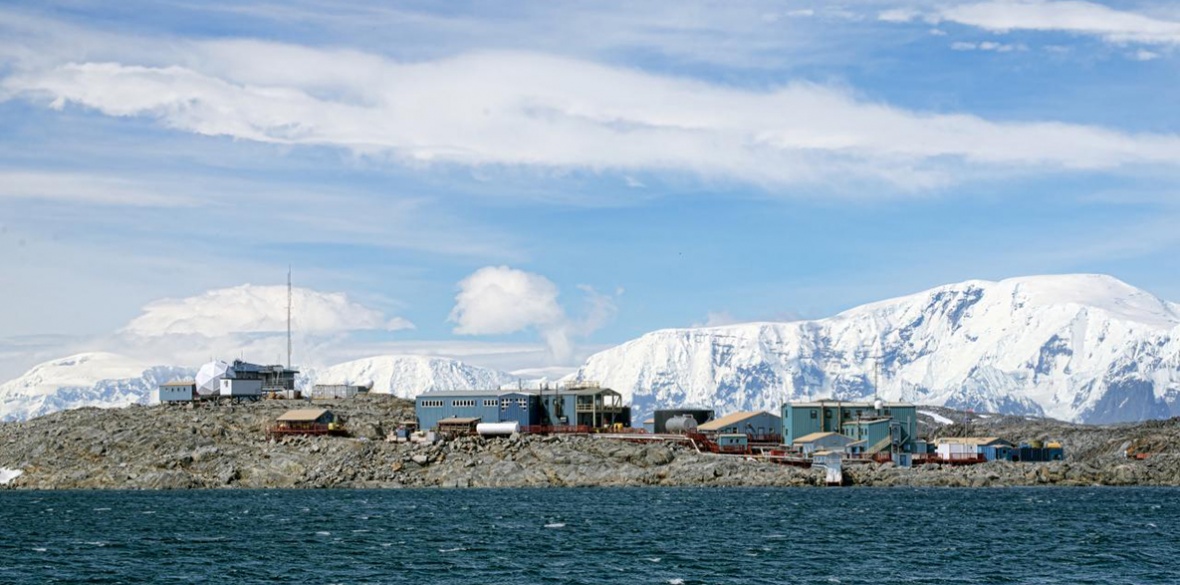This is the last article you can read this month
You can read more article this month
You can read more articles this month
Sorry your limit is up for this month
Reset on:
Please help support the Morning Star by subscribing here
A RECENT edition of the Morning Star (Thursday January 7) carried a letter from Tony Conway reminding readers about West Indian communists like Claudia Jones who founded the Notting Hill Carnival and Jamaican RAF pilot Billy Strachan who earned an equally important position as a leader of the anti-imperialist struggle all across the Caribbean and went on to assist and advise Caribbean leaders like Cheddi Jagan of Guyana.
Over the last few years I have written Morning Star features on both Jones and Strachan.
Looking over my notes on Strachan again I had one of those Eureka moments. Suddenly a bright light flooded into my lockdown-clogged brain.
The paragraph I read told me: “Billy, newly married, returned to Jamaica at the end of WWII and it was there that his life changed … Strachan met communist doctor David Lewis, who persuaded him that he could do more good in the liberation struggle by returning to England, then at the heart of the empire.”
This paragraph buzzed round my brain and sent me to the section of my bookshelves with my yachting and sailing books — yes, I’ve always loved boats and done a bit of sailing in my time.
I thought I knew what I might be looking for — and there they were, any number of books on the Maoris of New Zealand and their amazing ability to take sailing canoes and catamarans on long voyages without the help of a compass, sextant or even a chart.
Who was the author of these books that I had so enjoyed decade ago, and still do?
They were books that argued against conventional white Western yachting wisdom which declared simple “savages” could never make such spectacular voyages?
Yes, you have guessed it, none other than Dr David H Lewis. Here were books I had read and enjoyed since the 1960s but never put together with the communist east London doctor who worked with the likes of Strachan, Jones and other leading anti-imperialists in Britain.
There they were on my bookshelf. Books like his first — The Ship Would Not Travel Due West, published in 1961 or Dreamers of the Day, Daughters of the Wind, Children Of Three Oceans, We — The Navigators, Ice Bird, The Voyaging Stars, Voyage To The Ice.
The Antarctic Expedition of Solo, Icebound In Antarctica, and finally his autobiography, Shapes on the Wind, published in 2000.
So I discovered, many decades on, that two of my heroes, one a small boat sailing enthusiast and the other a communist anti-imperialist doctor from east London were in fact one and the same person. Eureka indeed.
David Henry Lewis was both a communist London GP and perhaps the most colourful seafaring adventurer of the second half of the last century.
Let me tell you a bit about him. He was born in England, of a Welsh-Irish family, and brought up in New Zealand and Rarotonga, where his unconventional father sent him to the Polynesian school rather than attending the European school for the children of upper-class colonials.
His academic education may have been sketchy but “many things that I learned were beyond price,” particularly the sagas of ancient Maori seafaring heroes that inspired the deep and lasting bond with Polynesian culture, which was to resurface in the second half of his life.
Lewis ended his boarding school education, against the explicit orders of his headmaster, with a 430-mile journey home in a self-built, wooden canoe.
“Looking back, it is now obvious that this undertaking was to set the tone for much of my future life,” he said.
He entered medical school in Dunedin in 1934, but moved to Leeds, England, in 1938 when his family started farming in Jamaica.
His strong socialist views and general disdain for authority failed to win him approval among the conservative circles of the medical fraternity.
He qualified in 1942, and — just after getting married to his first wife, who came from a Lithuanian emigrant family in the East End — joined the parachute regiment of the Royal Army Medical Corps.
He saw action in France shortly after the D-day landings. In early 1945 he was posted to Cairo and Palestine, where his political radicalism promptly involved him in the struggle between Arab nationalists and the zionist movement.
After his release from the army he spent two years in Jamaica where he was the Port Royal doctor.
Here he met and worked with the likes of Jones and Strachan, like them he clashed with colonial authorities.
In his case not least with his open disregard for the strict rules of confinement in the local leper colony.
These happy years ended when the family was expelled from Jamaica following his father’s uncompromising stand against the poor quality of the colonial officers who he described as “not much better than drunken murderers.”
After many years of travel, Lewis finally settled down in London in 1948 with his wife and two children.
He set up a single-handed medical practice in East Ham in the very same year the NHS was founded.
It wasn’t long before his communist politics got him involved in the struggles of that period.
He represented the left-wing Medical Practitioners’ Union at the London Trades Council.
He played an important part in the formation of the College of General Practitioners, the inspiration of Dr John Fry and served for some years on its research committee.
The early 1950s saw him leading a May Day march from Stepney Green to Trafalgar Square.
Here is how he remembered it: “Something like a century of working-class history was reflected in the banners waving behind me that commemorated struggles for a living wage, shorter hours, workshop safety and health, all the way back to Marx and Engels’s Communist Manifesto. I was deeply moved by the occasion.”
He began to realise how his political understanding led to his scientific and class approach to medicine and general practice.
He would discover that a healthy middle-aged docker, after an attack of pneumonia one winter, would rapidly deteriorate, develop intractable emphysema, be forced to retire and die — all in two or three years.
He saw that the death rate from chronic bronchitis-emphysema in unskilled workers was six times greater than in the professional classes.
However in 1960 the call of the sea got too much. He left his practice in the hands of a locum to compete in the first single-handed transatlantic race.
He snapped his main mast only a few hours out of Plymouth, yet still reached New York in 53 days, coming third out of five competitors.
After the race he picked up his family, the youngest still in a carry cot, in the United States, and set off to circumnavigate the world by way of Magellan’s straits, the South Pacific and the Cape of Good Hope.
It would be the first ever circumnavigation in a Maori-inspired catamaran.
Perhaps predictably after this adventure his return to general practice was brief. He sold his east London house and practice and took up adventurous sailing full time.
He sailed the 2,200 miles from Tahiti to New Zealand without the aid of compass, sextant, chart, or any other navigational aid, solely relying on naked eye observations of wave patterns, sea life, and sun, moon and stars.
This was to prove his theory that the ancient Maoris had been capable of long-distance voyaging using the same methods.
He reached New Zealand just 26 miles south of his intended landfall.
At the age of 55 he established an iconic reputation among single-handed sailors with his attempt to circumnavigate Antarctica solo.
The author and yachtsman Hammond Innes described it as “the greatest small boat journey into the ice since Shackleton.”
After his son accidentally sank his Scottish fishing boat he purchased the much stronger steel-hulled Ice Bird.
He set off from Sydney in October 1972 and battled 60-foot waves, hurricane force winds and ice.
The first of several capsizes occurred in November. He battled on, bailing continuously despite frostbitten hands.
After a further capsize he reached the United States Palmer Antarctic research station on Anvers Island on January 29.
Too late in the season to continue the voyage, he left Ice Bird in the care of the Americans.
Returning next summer, he set off for the second leg of his journey on December 12 1973.
History was to repeat itself. Again he was capsized and broke his mast.
He sailed to safety under jury rig but had to abandon the return to Sydney and instead limped slowly towards Cape Town, where he tied up his battered little ship on March 20 1974.
The dice had been cast for an entirely new chapter in his life, leading him away from the world of medicine towards a new career as an explorer, sailor, adventurer, Polynesian scholar and one of the first Antarctic environmental campaigners.
He set up the Oceanic Research Foundation to stop Australia and other countries taking over and exploiting the Antarctic.
The Australian authorities tried to shut down Antarctic waters to hide the damage exploitation was causing. Lewis would not be kept out.
When he had seen the Oceanic Research Foundation through its first three Antarctic voyages, and others were following through the breaches he had made in the bureaucratic defences, he left to continue his researches into traditional navigation among the Inuit on both sides of Bering Strait.
With this research completed, Lewis retired to New Zealand to write his autobiography, Shapes on the Wind.
Sometimes short of money, he would work a shift or two as a GP locum. He would sometimes visit patients in just his swimming trunks.
One perplexed lady asked a practice nurse about the strange man with the many Maori tattoos, to which the reply was: “Oh, he is our resident witch doctor.”
Lewis spent his last few years sailing quietly around New Zealand and the east coast of Australia.
Probably suffering from senile macular degeneration, he eventually became blind, but was able to finish his last cruise with the help of friends.
He died in October 2002, aged 85, in Tin Can Bay, Australia.
His ashes were scattered in the Pacific waters of Tin Can Bay.
A third Dr David Lewis. If you want to find out more about this Dr David Lewis on the internet do avoid confusion with another Dr David Lewis, a Canadian who it is claimed saved the Oxford Labour Club, the Oxford Union and Canada from communism. I spent some time unravelling this confusion.











